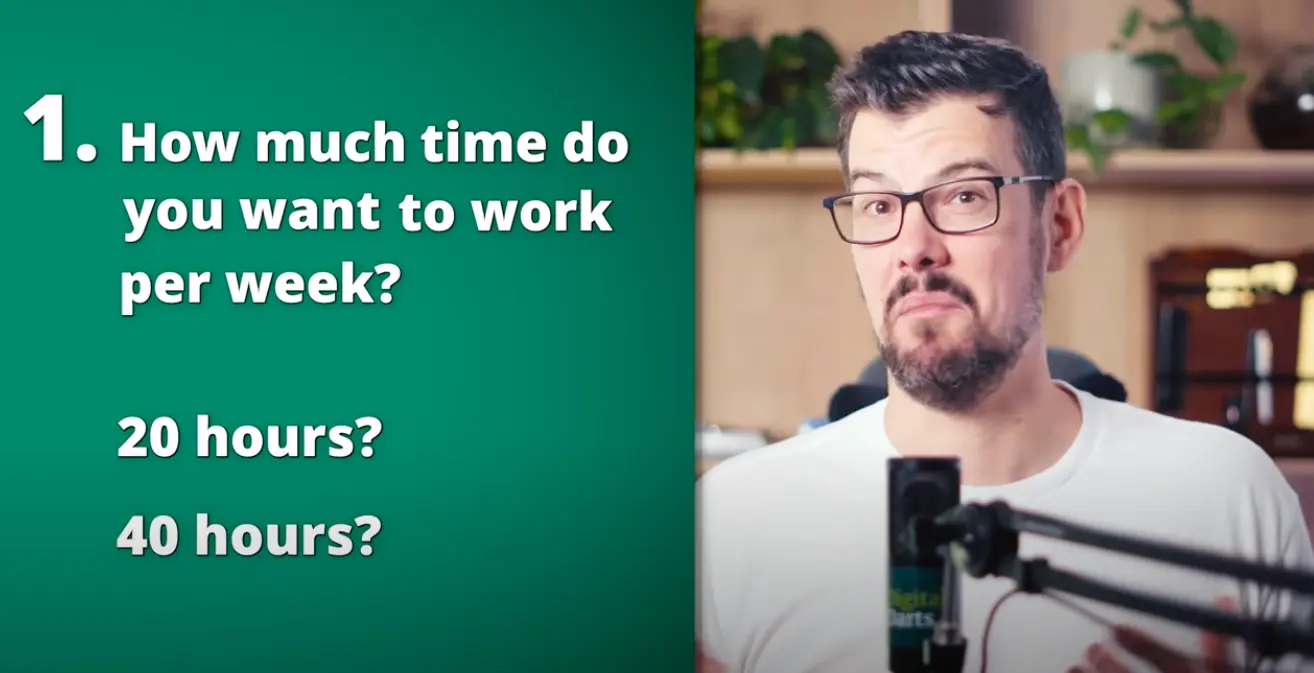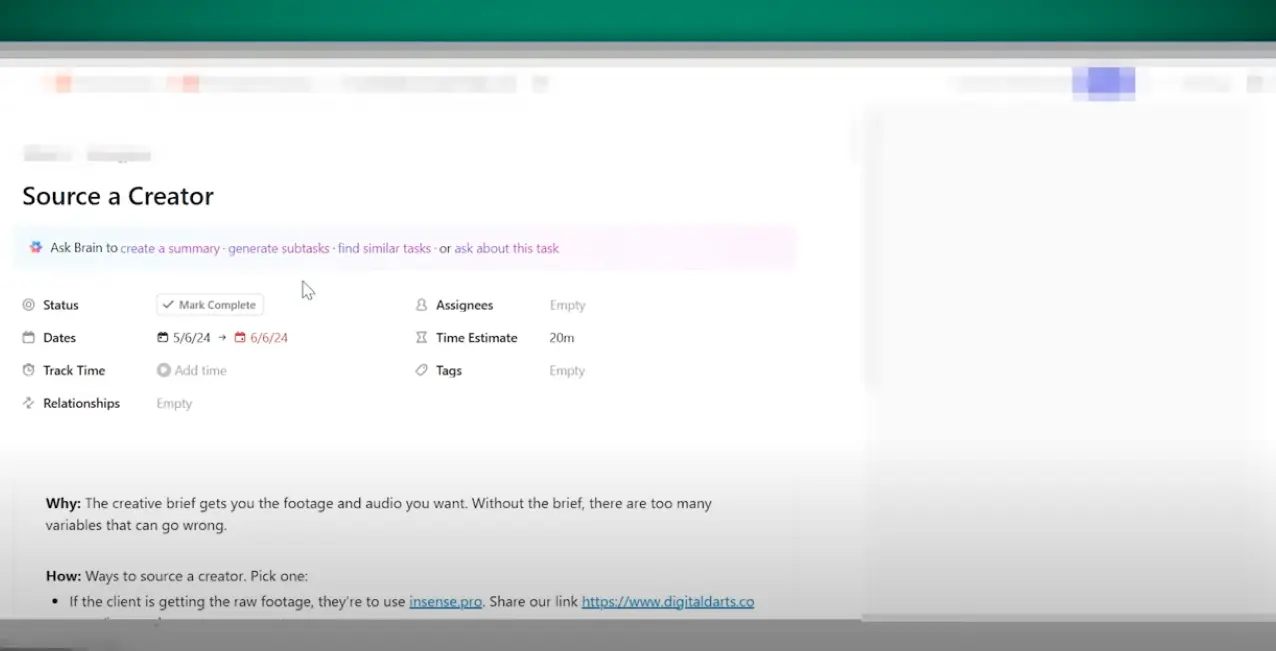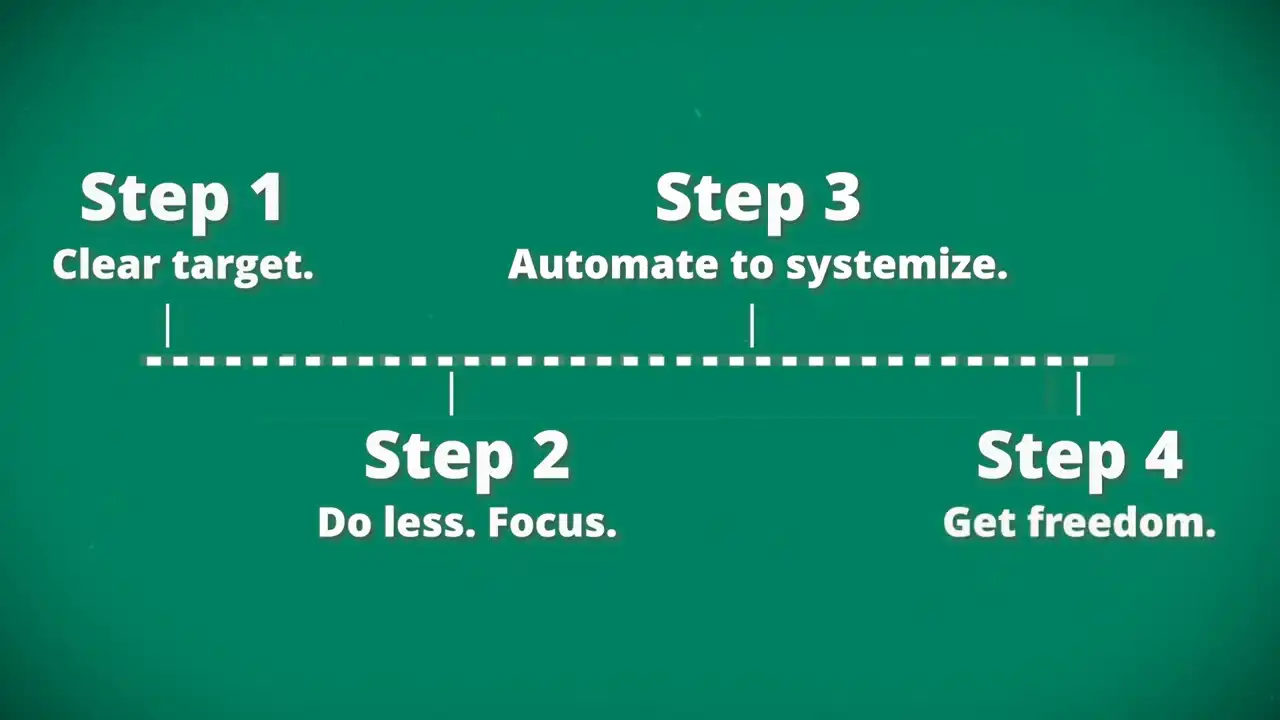If you want to know how to grow your Shopify store without burning out, you need more than marketing hacks and endless to-do lists. Running a Shopify brand is sold as the path to freedom. Work from anywhere, watch the sales roll in, and finally have the time to live your life.
But if you are honest, your day-to-day probably looks more like an increasing workload.
You are knee-deep in emails. Discount codes to fix. A supplier who has ghosted you. An ad campaign that has been “learning” for three weeks. Late nights tweaking things you are not even sure make a difference.
You are chasing growth, but it still feels slow. Every win comes with three more spinning plates, and you are running out of hands.
This is where the real answer comes in. It is not a productivity app you will abandon in two weeks. In this video and article, I’ll take you step-by-step to the root of how to grow your Shopify store without burning out.
It is a blunt, 10-minute exercise inspired from Tim Ferriss that I’ve used with everyone from early-stage founders to 8-figure brands. It forces clarity, frees hours of your week, and makes space for the work that actually grows your store.
Get The 10-Min Method Cheatsheet
Download your free copy of the 10-Min Method Cheatsheet to Grow Your Store 90% Faster mentioned in the video. The simple exercise to unlock an extra day per week in your schedule without complex tools.
How to Grow Your Shopify Store by Doing Less, Not More
People love to throw around the word “scale.” But nobody tells you what that actually looks like when you’re the one answering support emails at 11pm.
Christina Umerez lived this. During lockdown, she started selling custom pet portraits. It blew up—orders rolled in, but so did the chaos. Late nights, picky customers, endless “Can you put glasses on my dog?” requests.
Eventually, she made a hard call: no more custom orders.
She switched to print-on-demand. Suddenly, she was making 12k profit months—working six hours a week.
That’s not a “how to” moment. It’s a reminder: you can grow by doing less.

How to Set Business Goals That Actually Fit Your Life
Jay Clark nearly opened a yoga studio in Amsterdam. Flew there. Met lawyers. Did the whole pre-launch song and dance.
Then, on the flight home, he read The 4-Hour Workweek. He shut the whole thing down.
Jay didn’t want walls. He wanted freedom.
He launched an ecommerce store instead. It worked not because of the product, but because he built it around a lifestyle that actually mattered to him.
You’ve got to do the same.
- How many hours a week do you want to work, really?
- What salary would make life feel comfortable? Not rich, just comfortable?
- Based on your profit margin, how much revenue does your store actually need?

If you want $100,000 in personal income and your profit margin is 30 percent, your Shopify store needs to generate roughly $333,000 in sales.
That figure is your freedom number. It is not a flashy seven-figure goal. It is not a unicorn valuation. It is simply the number that allows you to live the lifestyle you pictured when you first dreamed about running your own business.
When you know this number, you can stop chasing arbitrary revenue milestones that sound impressive but do not match the life you want. You can plan your workload, marketing strategy, and hiring decisions around hitting the exact sales figure that gives you the income and time freedom you need.
For some, that might mean running a lean, high-margin store that hits the target with fewer sales and less stress. For others, it might mean building the systems and team to support higher volume without working more hours.
The point is to measure your success by how well your business serves your life, not by how big the top-line number looks to everyone else.

How to Audit Your Task List and Find Hidden Time
Open a notepad or your project management tool (I use ClickUp) and write down everything you do in your business. Every single task counts. If you answer an email, write it down. If you update your Shopify theme once every two months, that goes on the list too.
Most people make the same mistake. They forget half the things they do each day, then wonder why there are never enough hours.
Once you have your list, go through each task and ask yourself:
“Is this making me money or saving me time?”
“If I stopped doing this, what would actually happen?”
“Am I doing this because it is essential, or because I am used to doing it?”
When you look at your work this way, you will quickly spot the tasks that are just noise. Things that once felt important start to look like busywork.
Sometimes the issue is not your task list at all, it is your habits. Checking social media every half hour. Refreshing ad results every 10 minutes. Starting a new email campaign just because you feel like you should.
Cut the habits that waste your time and you will instantly get hours back in your week. That is time you can put toward the work that actually grows your Shopify store.

How to Grow Your Shopify Store With Automation
Digital Darts subscriber SpyGuy is a perfect example of automation. Founder Allen Walton ran the entire store on his own until sales outpaced his ability to keep up. Refunds piled up. Bookkeeping fell behind. Customer support consumed entire days. Standard operating procedures were out of date before he could even write them.
His turning point came when he brought in Finaloop to automatically handle transactions. Then he layered in AI tools to take care of repetitive tasks. With the right systems in place, SpyGuy passed seven figures in revenue without burning Allen out in the process.
Now, take a look at your own task list. Start tagging anything that could be automated. You do not need to build the automation today. Simply identify it for later.
Here are a few quick wins:
- Auto-pay your bills
- Use Shopify Flow for order fulfilment
- Set up email flows that sell while you sleep
- Use Gorgias to handle the bulk of customer support
- Automate repetitive admin with Zapier
- Create templates for product restock orders
One important rule: automation does not fix inefficiency. If your process is messy, automation will only make you faster at doing the wrong thing. Clean up the system first, then automate it.

How to Step Back and Let Your Shopify Store Run Without You
The real achievement in business is not having a massive product line or a large team. The real achievement is not being needed at all.
In 2017, I started working with Rob and Tess, the founders of Lack of Color. At the time, they were already doing strong numbers as a seven-figure brand with impressive reach. The problem was that the business still ran through them. Every decision, every fire, every approval, every customer issue landed directly on their shoulders.
When I took over their Google Ads and Facebook Ads, revenue doubled in the first year. That result was great, but the real win was what happened next. They began to step away from daily operations. The systems we built meant they no longer had to be involved in every single choice or crisis.
Rob told me:
Working with Josh gave me the confidence to step back. Time is all we have in the end.
That shift gave them more than higher sales. It gave them the ability to focus on the big picture, enjoy the success they had created, and reclaim their time.
This is the point you should be aiming for. When your Shopify store can run without you, you finally have the space to think, to plan, and to enjoy the reason you started the business in the first place.
Putting the 10-Minute Method Into Practice
Look at your current workload with a brutally honest lens. Which parts of your business still grind to a halt without you touching them?
Those bottlenecks are your roadmap. If you want to grow your Shopify store, your job is not to do more work. It is to make yourself less necessary. That does not mean walking away tomorrow. It means replacing yourself in the right order, one system at a time.
Start with the tasks that take the most mental energy or stall progress when you are busy. Document them step by step. Use tools like ClickUp or Notion to store SOPs, then hand them off to a VA, contractor, or an automated process.
The goal is not just to save time. It is to build a business that performs at the same level whether you are at your desk, on holiday, or asleep.
When you remove yourself as the single point of failure, you free up headspace to work on growth projects such as launching new products, testing better ads, or improving customer retention. You are no longer stuck in daily operations.
The less your Shopify store depends on you, the more freedom you have to enjoy the life you built it for. That is how you grow with less stress and more control.

Need Help Putting This Into Action? How to Get Personal Help to Grow Your Shopify Store
I’ve turned this entire framework into a free cheatsheet you can download and apply immediately.
Get the 10-min Method Cheatsheet to Grow Your Store 90% Faster.

This 10-minute method framework of DEAL from Tim Ferriss is simple, but it works because it forces you to focus on what matters most.
- Define what you actually want
- Eliminate what doesn’t get you there
- Automate what still needs doing
- Liberate yourself from being the bottleneck
Follow these steps to create a Shopify store that grows faster, runs smoother, and gives you back the time and freedom you started this business for.
For the complete, exact system I use with clients to scale Shopify stores without burning out, get my course Clear Cut Growth.
Liked this article? Get more free Shopify guides:
Enter your primary e-mail address to receive notifications when there are new educating Shopify tutorials and free practical tips to increase sales. You'll also immediately download a 30+ page deck "4 Rules of Store Growth: To Sell More on Shopify, Escape Work You Hate, Boost Profit, and Have a Business You're Proud Of".

